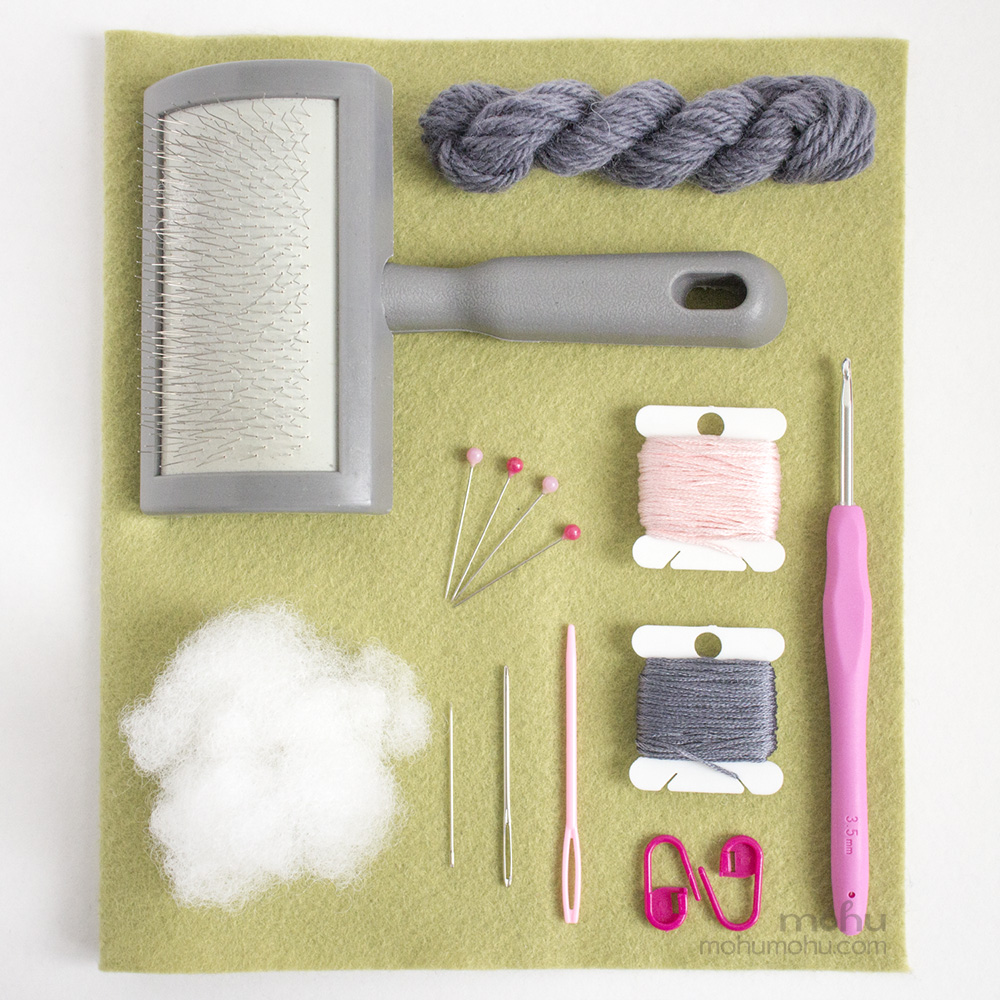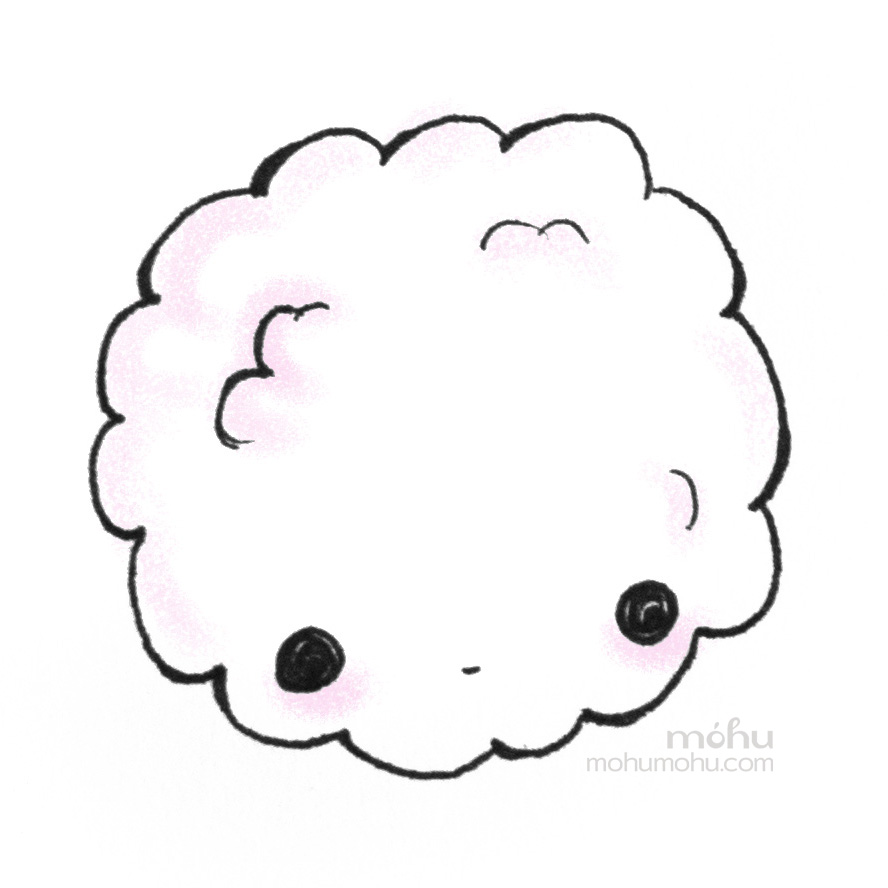Published in tutorials on Jan 17, 2019
Read all about the basic supplies (and some optional extras) used to crochet your own amigurumi.

Yarn
There are many different types of yarn available, with different colours, textures, and weights. For beginners, I recommend a plain medium weight yarn, such as worsted weight acrylic or wool. It’s a good idea to start with lighter colours, because dark yarn makes the stitches a little more difficult to see. Learn more about yarn in the previous post: Choosing Yarn.
Crochet hook
Crochet hooks come in many different sizes. The thicker your yarn, the bigger the crochet hook you’ll need. Most yarn will have a recommended hook size on the packaging, but for amigurumi you should use a hook that’s a few sizes smaller than recommended.
For example, if you’re using medium (worsted) weight yarn, then use a medium sized crochet hook (about 3.5mm - 4mm). If you find your stitches have big holes in between, with space for the stuffing to show through, use a smaller hook. If your crochet piece is stiff or your hands get sore quickly, try a slightly larger hook.
Stuffing
Polyester toy stuffing (also called fibrefill or Poly-fil) can be found in most craft stores, and is a common stuffing to use for amigurumi. I usually mix in a few offcuts of yarn and thread leftover from other projects, because it helps reduce waste and makes your stuffing go a little bit further. You could also use the insides of an old pillow, if you can’t find any toy stuffing.
Eyes
Safety eyes are often used for amigurumi. They come in a variety of colours, shapes, and sizes. Safety eyes are attached before you stuff and close your amigurumi, and have a little washer that holds the eyes in place. I prefer to use round black beads, because I can sew them on after the amigurumi is filled. You can also use black yarn or thread to embroider little eyes.
Craft felt
Felt can be used to add little details to amigurumi. Choose the soft, thin kind, which is usually about 1 mm thick. Acrlyic felt, wool felt, or wool and acrylic blends will all work. A small sheet of felt lasts quite long, because you only use a little bit at a time.
Scissors
Used to cut things (mostly yarn). Any sharp pair will do.
Yarn needle
A yarn needle (also called a tapestry needle or darning needle) is quite thick, with a blunt tip and large eye. Use it to sew up holes and sew the different parts of your amigurumi together. Yarn needles can be made of metal or plastic.
Sewing needle
A sewing needle or embroidery needle is thin with a sharp tip. Use it when sewing with thread.
Thread
Use sewing thread to embroider small details, or sew felt pieces in place. Cotton embroidery thread works best, but any coloured thread will do.
Pins
Pins are useful for holding bits in place before you sew them on. Get the kind with large round heads, so that they don’t get lost inside your amigurumi.
Stitch markers
Stitch markers can be used to mark the beginning of each round to help with counting, or to mark the placement of limbs. Paperclips, safety pins, bobby pins, or scraps of yarn can all be used as makeshift stitch markers.
Wire brush
To make an extra fluffy amigurumi, use a wire brush to brush out the yarn after crocheting your amigurumi piece. Use something with very stiff bristles, like a wire pet slicker brush. This technique works well with wool and most acrylic yarn, but may not work with cotton or micro-spun acrylic.
Fiber stuffing tool
Sometimes it can be difficult to get the stuffing into little corners, especially if you’re making something small. You can get a special fibre stuffing tool, or just use a makeshift thing to help you get the stuffing in. I use the back of a pencil for bigger pieces, or a little toothpick for tiny things. The back of a rubber-gripped crochet hook works well too.
Up next: Holding your hook and yarn.
